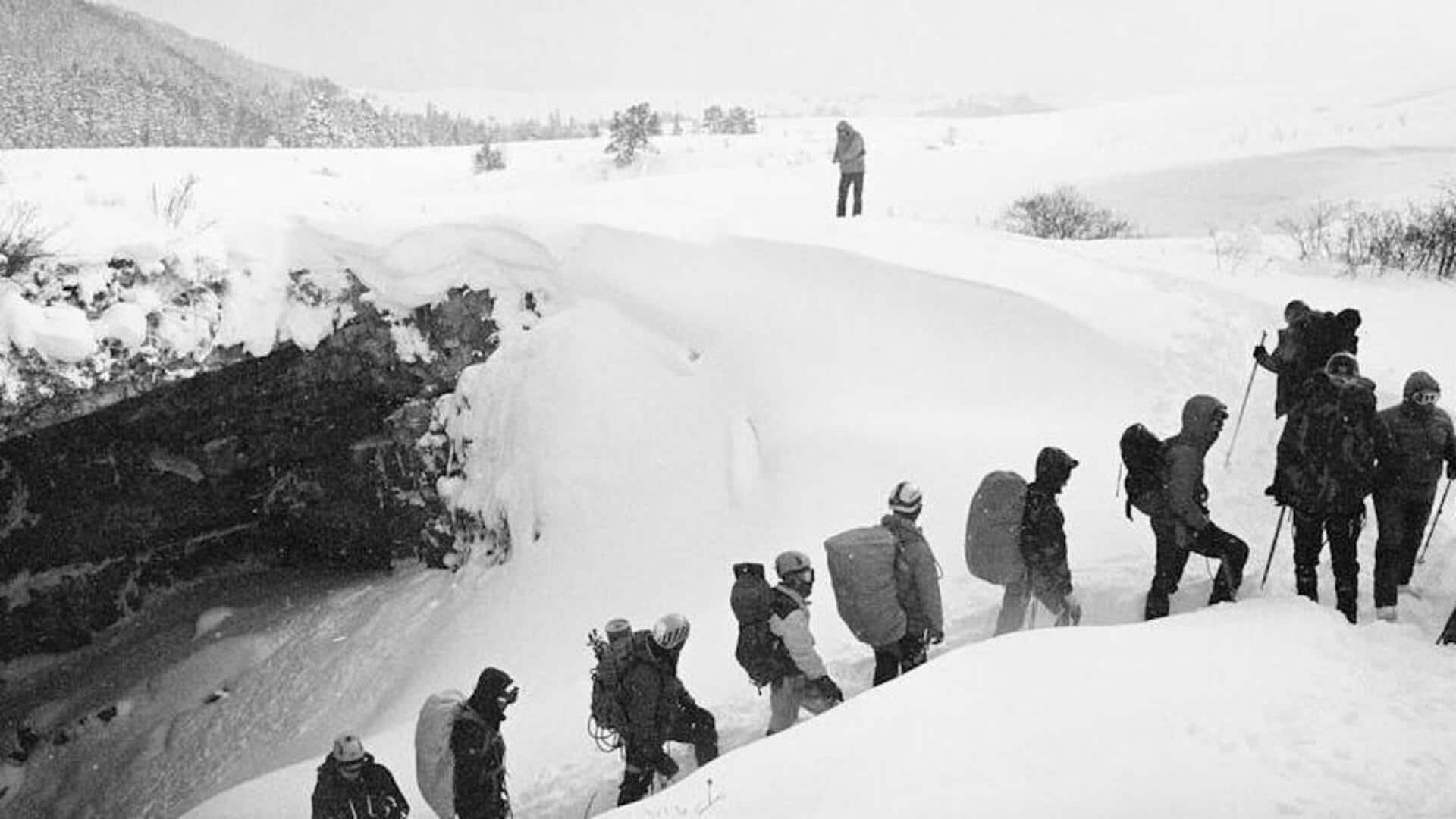
Ice climbing extravaganza: Scaling frozen waterfalls
What's the story
Ice climbing is a thrilling adventure sport that requires strength, skill, and a healthy dose of adrenaline. Climbers equipped with ice axes and crampons tackle frozen waterfalls, icy cliffs, or glaciers, turning the winter landscape into a vertical playground. Physical challenge meets mental endurance against the backdrop of nature's frozen artistry, making ice climbing a truly unique experience for thrill-seekers.
Gear up
Choosing the right gear
Selecting the appropriate equipment is crucial for safety and performance in ice climbing. Essential gear includes insulated mountaineering boots, vertical ice crampons, a pair of ice tools (axes), a helmet, and a harness. Climbers should also dress in moisture-wicking layers to maintain warmth and dryness. While quality gear can be expensive, it is a worthwhile investment for safety and improved performance on the ice.
Location hunt
Finding the perfect location
Choice of location greatly influences the climbing experience. Frozen waterfalls in Norway's Rjukan Valley or Canada's Banff National Park are among the most popular destinations for ice climbing. These locations provide a variety of routes, accommodating both beginners and seasoned climbers. Choosing a site with the right level of challenge and picturesque landscapes can turn your adventure into an unforgettable experience.
Skill set
Learning techniques and safety measures
Before tackling frozen waterfalls, it's important to learn essential climbing techniques and safety. Most climbers start with taking courses from certified instructors. These courses teach you how to use crampons effectively, swing an ice axe with precision, and set up secure belays on ice. Plus, knowing first aid and rescue techniques can be a lifesaver during climbs.
Climb together
Joining guided tours or groups
For beginners or those venturing into unknown climbing landscapes, participating in guided tours or joining climbing groups can be highly beneficial. These tours provide professional instruction, customized to your experience level, and guarantee strict adherence to safety protocols. Group climbing fosters a sense of camaraderie during demanding ascents, and can cultivate lifelong friendships among fellow adventurers.
Ready up
Preparing physically and mentally
Ice climbing requires significant physical strength for pulling yourself up and mental fortitude to handle difficult climbs in freezing temperatures. Regular cardio exercises build endurance, while strength training strengthens arm, leg, and core muscles essential for efficient climbing. Mental preparation includes visualizing climbs, cultivating mindfulness, maintaining focus under pressure - these are key factors for successful ascents.